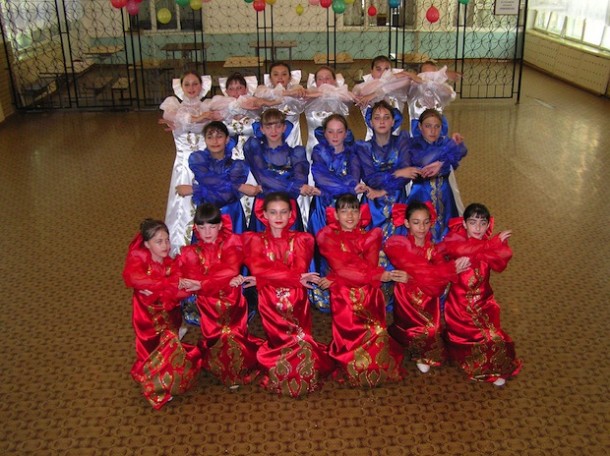RUSSIA. The latest impediment to U.S.-Russian relations – a recent ban on U.S. adoptions as a response to the death of an adopted Russian child as well as the U.S. Magnitsky Bill – has threatened to make bilateral cooperation difficult. The recent case of Dima Yakovlev, an adopted Russian boy who died of heatstroke upon being forgotten in a car by his American father, has reminded the world of the 19 Russian children who were killed by their American parents or died under their care in the last two decades. As Russian officials continue to push for investigations in abuse cases of children adopted by U.S. citizens, emotions are raw on both sides and are likely to maintain a chill in political cooperation between the two sides. Yet regardless of which regime is assigned the blame for the most recent display of tensions, Russia’s adoption bill has another story to tell: Post-Soviet Russia needs its children now more than ever.
Russia’s demographic crisis is not a new development and is predicted to get worse. In 2012, an article in Forbes stated that “Russia’s fertility rate nosedived during the chaotic 1990′s…The number of children born during [those years was] much smaller than during the 1980′s…and unless there is a bizarre, historically unprecedented, increase in the [total fertility rate], the number of births is going to go down.” But the story is not just about birth rates, but instead about both low birth rates and high death rates. “Male life expectancy in Russia today is approximately 60 years, or at least 15 years less than in most industrialized nations.” This matters for Russia not only because of prestige and world standing, but also because a dwindling population will eventually affect the economy. In addition to Russia’s current economic worries, such as corruption and increasing reliance on oil exports, an added crisis in the supply of labor is likely to undermine any policy changes currently pursued.
As a result, President Putin named the demographic crisis as “the most urgent problem facing Russia” today. The problem can be viewed in light of not only domestic issues, but also foreign policy issues as it coincides with other pressing concerns in Russia’s foreign relations, especially those of U.S.-Russian affairs. Disputes, such as those over Syria, continue to mar the relations between the two countries, at a time (post-Russia’s WTO entrance) when cooperation is most needed. As Russia begins to implement a ban on U.S. adoptions of Russian children, the West sees Russia as adding to a long list of disputes and continues to shirk even a hint of responsibility, while the Kremlin argues that the U.S. Magnitsky Bill is the culprit in the matter.
Though it is clear that neither side is likely to take responsibility for the growing tensions, many in the West are speaking out against the Russian regime for denying Russian children, mostly orphans, the opportunity to have a better life in the United States. Many emotional appeals on the world stage have attempted to show that American families will love and care for these children, even though there are in fact some cases of abuse that ruin their reputation. At the end of the day, both sides understand that the few families who have committed horrible crimes against Russian children are exceptions. But what many in the West don’t want to accept is Russia’s attempt to keep its population inside of its borders. While the ban is a direct retaliation to a U.S. bill, and comes at a politically inconvenient time, it also comes at a demographically convenient time.
It is true that retaining a few thousand children will not make a huge impact on stalling the demographic crisis. Instead, structural and social reforms are necessary to enable the population to grow steadily and prevent the worrisome death rate from imposing itself more permanently onto Russian society. But it is also true that Russia’s leaders are acknowledging the problem. Not only has Putin elevated it to high priority, Duma members are also pushing for reforms that target the demographic crisis, by curbing alcohol and tobacco sales to minors, for instance. These leaders realize that a long and difficult battle must be fought to reverse the demographic crisis. They also realize that reforms must begin at home and must involve all levels of society, even the orphans. The ban on adoptions and the crisis go hand in hand. The regime can begin implementing reforms that will simultaneously incentivise families to have more children, while increasing the standard of living of those children without parents. Such reforms, states Putin, can come in the form of better social programs such as day care and after school activities. As The Atlantic reports, such programs have already begun to make a difference on the fertility rate.
There are no guarantees that Russia’s leaders will be swift or successful in their plans. In fact, it is likely that reforms will be bogged down in bureaucracy and political struggle. At the same time, however, Russia must face its problems independently. The West should not vie to intervene at every possible moment. Of course, it is difficult to watch children suffer when they could potentially have a better life in the U.S. At the same time, U.S. adoption cannot remain as the only solution to the problem. Russia must learn to take care of its children first and foremost, even if the demographic crisis is eventually reversed.
Russia must think about its future. While in the short term it is tempting for critics to appeal to sympathies of parents who want to see orphans united with loving families, in the long term, Russia needs to be able to provide for these children independent of foreign assistance. Then, and only then, can international adoption take place and play a positive role.

